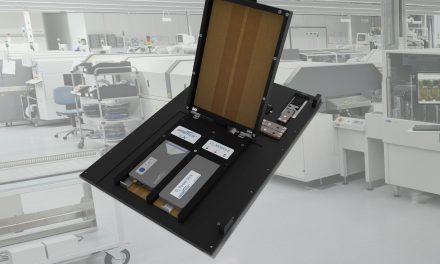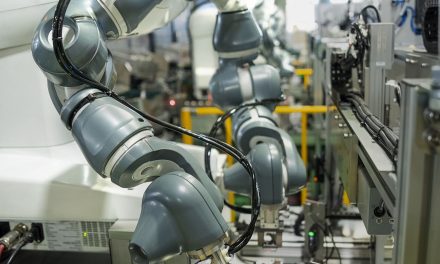Dr Richard Holliday, Founder of Material Value, explores the strategic materials issue and how this is impacting the industry.
A wide range of materials have long been used to create and define the performance of the electrical and electronic components that are designed and engineered. Intel estimates that whilst their computer components contained just 11 elements from the periodic table in the 1980’s, this will potentially rise to 60 elements in the coming years. General Electric believes it uses 70 of the first 83 elements in the table within its products.
Yet, industry can no longer just assume the routine use of this same group of materials in the years to come. With demand for many materials increasing and supply from countries, most notably China looking fragile, shortages and price volatility of some key materials are becoming increasingly common. This looks set to continue.
So which of these materials relate to the electrical and electronics industry? The list is extensive and includes some of the rare earth elements (REEs), indium, tantalum and lithium, but probably the prime concern relates to the permanent magnet sector, where the materials of interest are the rare earth elements dysprosium, neodymium and praseodymium. These elements are all used in rare earth permanent magnets. The magnetic field strength afforded by dysprosium coupled with the thermal resilience provided by dysprosium enables compact, high-torque, durable motors to be produced.
The recent report by the Joint Research Centre (JRC) of the European Commission assessed whether there could be any potential bottlenecks to the deployment of important technologies in the EU due to the shortage of certain metals. It found that five metals commonly used in these technologies show a particularly high risk. These elements included neodymium and dysprosium (as well as indium, tellurium and gallium). A similar 2011 report by the US Department of Energy highlighted supply challenges for a similar, though not identical, set of materials; dysprosium, terbium, europium, neodymium and yttrium.
Some people believe the scale of the problem could be large. A team at MIT in the US recently published work that showed if the deployment of clean technologies is going to be at the targeted levels to meet mandated CO2 reduction targets, industry will need an increase in the supply of neodymium and dysprosium of more than 700 percent and 2600 percent respectively by 2037. This requires annual growth rates of 8 percent for neodymium and 14 percent for dysprosium, against an actual current growth rate of 6 percent. Whether increased mine supply can meet this increased need, US industry is not taking any chances; over a dozen industry trade bodies recently urged the US Dept of Energy to act now to re-establish a rare earth supply chain in the US.
There are design solutions that engineers can pursue to mitigate the threat. Economising on the amount of REEs used is one option, but motor designers have to work harder and be more creative in order to economise on magnet usage. This might involve more time in testing and analysis of a motor design to determine the smallest motor (and hence minimum REE usage) that will fulfil the product requirements.
Substitution of critical materials for alternatives is one potential strategy for companies to adopt. In a recent survey conducted by consultancy PWC, over 60 percent of senior execs believed increased substitution of critical materials was the correct response for their company to this major threat. These substitutes for critical materials may be either alternative materials which are considered to pose less of a supply risk or re-designs of existing technology to avoid the need for such materials.
At Northwestern University researchers, supported by a $3.5m grant from the US dept of Energy are looking to engineer new magnets that do not utilise rare earth elements. The research consortium, REACT (Rare Earth Alternatives in Critical Technologies for Energy) includes General Motors whose vehicle electrification programme will depend on efficient magnets. The specific aim of this project is to manipulate material structures at the atomic level to develop superior magnetic properties. One potential alternative material currently under review is colbalt carbide, which the team have used to produce the world’s fourth most powerful magnet, not relying on rare earth elements. Related projects are underway at the University of Delaware focused on using nanostructured rare earth magnets with 30 to 40 percent lower neodymium content.
Large corporations are rising to the challenge too. As well as GM, a team at Siemens is researching technologies that allow critical materials to be substituted. These engineers at the Corporate Technology Centre are concentrating their efforts on industrially feasible solutions that can be deployed economically for large volume production. Hitachi has recently said it had developed an energy-efficient midsize industrial motor for air blowers and pumps that did not use rare earth metals.
Some early-stage venture capital backed technology companies have also spotted what they believe is a market opportunity. A typical example of a start-up pursuing this type of innovation is C3Nano. A strategic material of critical importance to the electronics industry is indium tin oxide (ITO) which is used in over 90 percent of the transparent conductive film market including touchscreen displays. Potential alternatives to ITO include organic materials, finely printed conductive meshes or nanocarbon-based conductive coatings which is the focus of C3Nano’s strategy.
Recycling of end-of-life electronic products (WEEE) might have some impact in increasing supply of critical materials, but this is likely to be a longer-term part of the solution, due to the technical challenges involved. Japan is making definite moves in this direction, investing heavily in increasing recycling rates for indium from scrap and aiming to reduce its consumption of new indium by 50 percent by 2013 through recycling.
Whilst the materials of concern may change over time, it looks certain that engineers and product designers will need an increasing awareness of the strategic issues surrounding material selection in the future.
Dr Richard Holliday is the founder of Material Value, a specialist business and technology consultancy that provides services to metals and materials industries
Material Value




